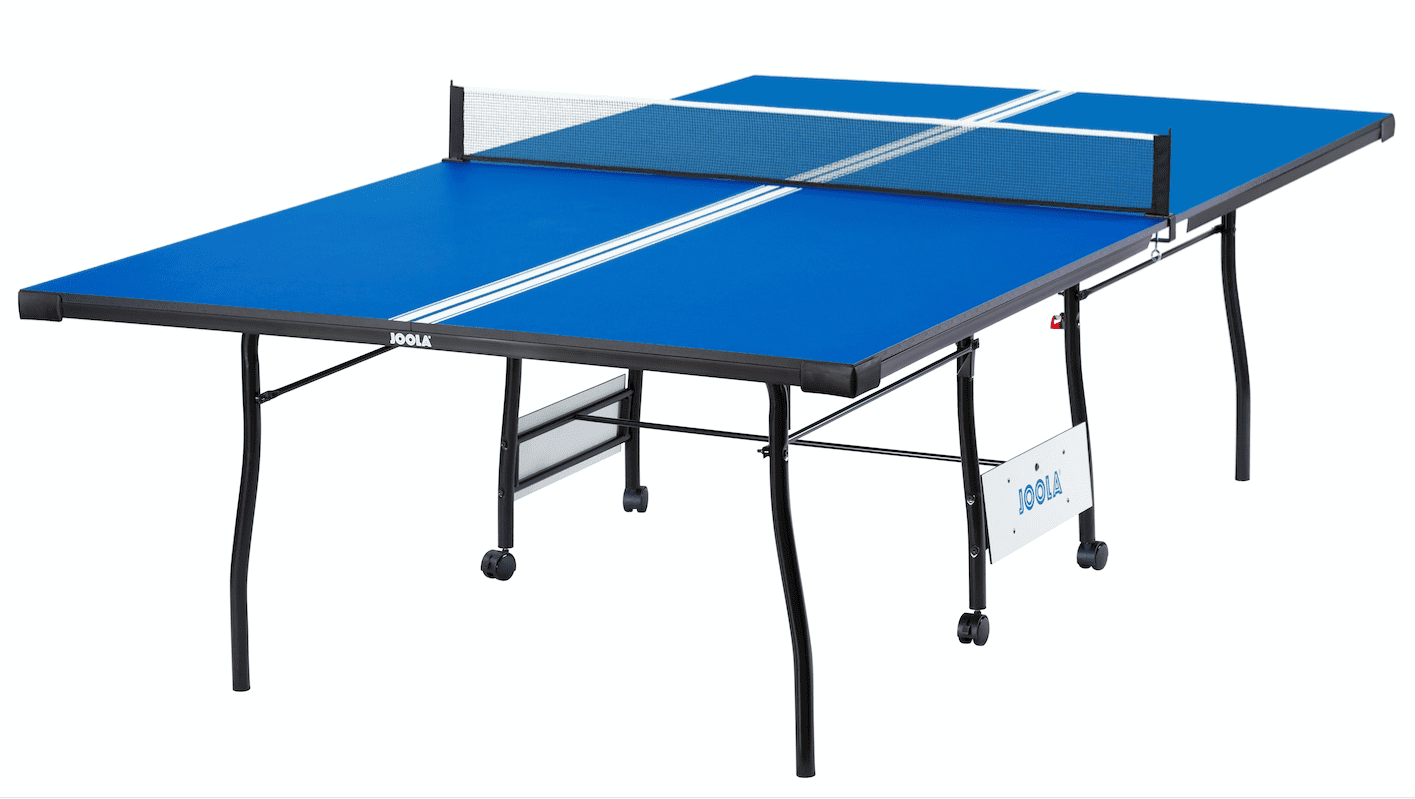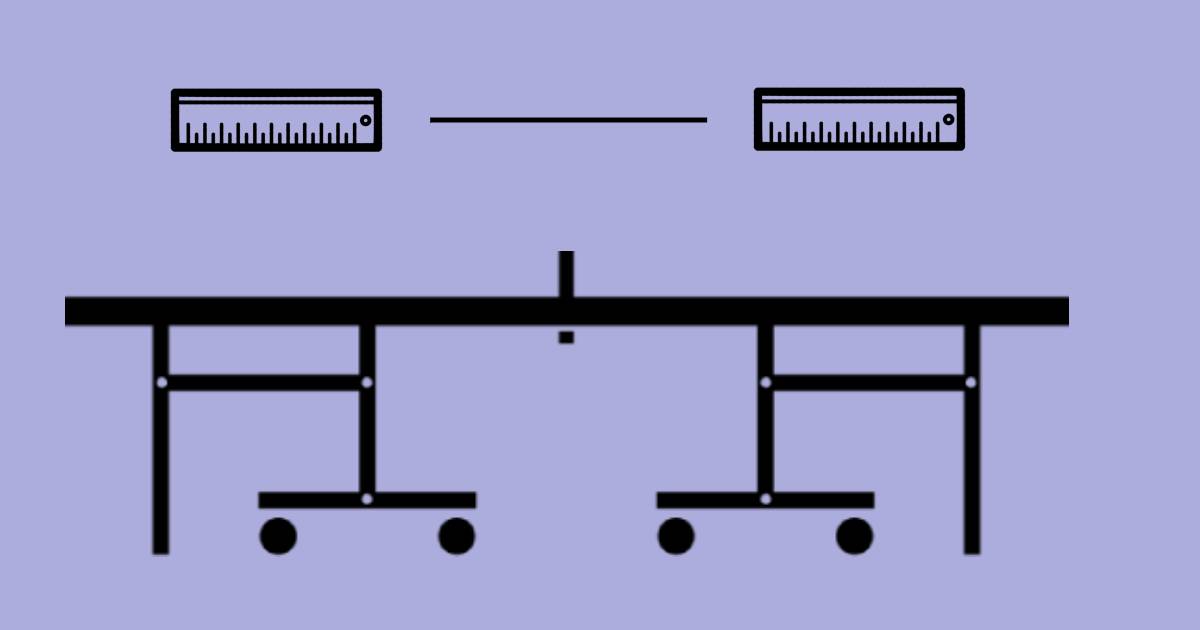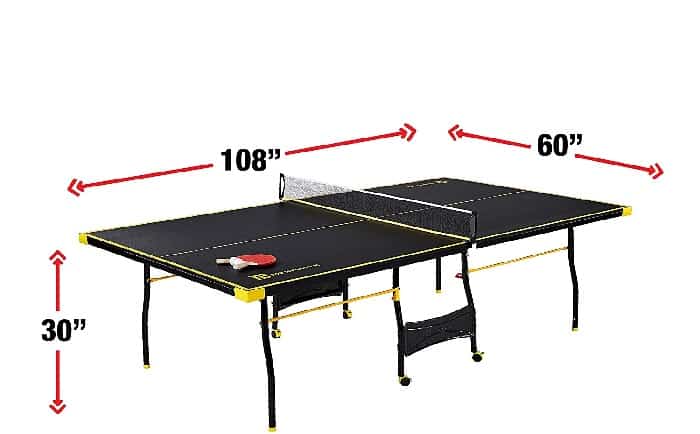How Big Is A Regulation Ping Pong Table
How Big Is A Regulation Ping Pong Table?
Ping pong, also known as table tennis, is a popular recreational sport played by millions of people worldwide. Whether you are a seasoned player or a beginner, understanding the dimensions of a regulation ping pong table is crucial in order to play the game properly. In this article, we will explore the standard size of a ping pong table and provide you with a comprehensive guide to help you set up your very own playing area. So let's get started!
Regulation Ping Pong Table Size: Explained

Before diving into the specifics, it's important to note that a regulation ping pong table should meet the standards set by the International Table Tennis Federation (ITTF). This ensures that players around the world can compete on equal grounds, as the dimensions remain consistent in professional tournaments.
Table Dimensions
A standard ping pong table measures 9 feet long, 5 feet wide, and 30 inches high (2.74m x 1.525m x 76cm). The table is rectangular in shape and divided into two halves by a net, which stretches across the width of the table. The net should be 6 inches (15.25cm) high and extend 6 inches (15.25cm) beyond the width of the table on either side.
When setting up a ping pong table, ensure that there is ample space around it. Players need to move freely while playing, so it's essential to have a clear area around the table, devoid of any obstructions. A recommended minimum clearance of 5 feet (1.5m) on all sides of the table is ideal.
Playing Surface

The playing surface of a regulation ping pong table is usually made of a high-quality wood material, ensuring a consistent and durable playing experience. The thickness of the playing surface is an important factor in maintaining the bounce of the ball.
According to ITTF regulations, the playing surface must have a dark hue and be matte in order to minimize any glare from overhead lighting. It should also have clearly marked white lines along the edges to define the boundaries of the table.
Subheading 1: Ping Pong Table Thickness Matters
When it comes to the playing surface thickness of a ping pong table, there are typically two types to consider: 19mm and 25mm. The 19mm tables are more commonly used for recreational purposes, while the 25mm tables are preferred for professional play.
A thicker playing surface provides better ball bounce and enhances overall gameplay. The ball bounces more predictably and allows players to execute advanced shots with greater control. Therefore, if you are serious about the game, investing in a table with a 25mm playing surface is highly recommended.
Subheading 2: Folding or Non-Folding Tables?
Another important consideration when purchasing a ping pong table is whether to go for a folding or non-folding option. Folding tables are designed for easy storage and mobility, making them a suitable choice for those who have limited space or intend to move the table frequently.
Non-folding tables, on the other hand, provide superior stability and a more consistent playing experience. These tables are usually found in sports centers, clubs, and professional tournaments. If you have ample space and plan to keep the table set up permanently, a non-folding table is the way to go.
Subheading 3: Selecting the Right Ping Pong Table
When selecting a ping pong table, there are a few additional factors to consider:
Frequently Asked Questions (FAQs)
Now, let's address some common questions related to regulation ping pong table size:
Q1: Can I use any type of table for playing ping pong?
A1: While it is possible to transform a regular table into a ping pong surface by placing a table tennis topper on it, the playing experience may not be the same. To truly enjoy the game, it is recommended to invest in a regulation ping pong table that meets the specified dimensions and features.
Q2: What happens if the table dimensions are not regulation size?
A2: Playing on a table that does not meet the regulation size can significantly affect the gameplay. The ball's bounce may be inconsistent, and the dimensions may alter the trajectory of shots. To ensure a fair and consistent playing experience, it is best to stick to regulation-sized tables.
Q3: Do I need to maintain the ping pong table?
A3: Yes, regular maintenance of your ping pong table is essential to keep it in good condition. This includes cleaning the playing surface, tightening any loose screws, and storing it in a dry place when not in use. Following these maintenance practices will ensure a longer lifespan for your table.
In conclusion, a regulation ping pong table should have a length of 9 feet, a width of 5 feet, and a height of 30 inches. The playing surface should be made of high-quality wood, with a matte finish and clearly marked boundary lines. Consider the thickness, folding/non-folding options, and other factors before purchasing a table. By following these guidelines, you'll be well-equipped to set up your own ping pong playing area and enjoy countless hours of fun and competition!
Latest Regulation: Regulation Ping Pong Table Size
 Image Source : regulationlatest.blogspot.com
Image Source : regulationlatest.blogspot.com ping pong joola regulation envoy
Ping Pong Table Dimensions: Regulation & Smaller Sizes
 Image Source : pongplace.com
Image Source : pongplace.com ping pong
Ping Pong Table Dimensions Guide: Specs & Regulations | Bar Games 101
 Image Source : bargames101.com
Image Source : bargames101.com ping pong regulation
Regulations Ping Pong Table Dimensions: Official Dimensions
 Image Source : pingpongpaddlereview.com
Image Source : pingpongpaddlereview.com ping pong dimensions official chatra guyana
You And Me Ping Pong Table - Indoor/Outdoor In 2021 | Ping Pong Table
 Image Source : www.pinterest.com
Image Source : www.pinterest.com ping pong
What Are Ping Pong Rules? (with Pictures)
 Image Source : www.wisegeek.com
Image Source : www.wisegeek.com table tennis pong ping rules why sports birthday play flooring wisegeek types children ball intelligence artificial robotics connection between ideal
Pin On Ideas For The House
 Image Source : www.pinterest.ph
Image Source : www.pinterest.ph MD Sports Table Tennis Set, Regulation Ping Pong Table With Net
table tennis md sports ping pong set regulation balls paddles tables pieces piece solar tiny bottle yourself whole keep system
Ping pong dimensions official chatra guyana. Pin on ideas for the house. Latest regulation: regulation ping pong table size. What are ping pong rules? (with pictures). Regulations ping pong table dimensions: official dimensions